In what is fast becoming a modern-day success story of youth-driven defence innovation, two undergraduate students from BITS Pilani Hyderabad have designed, assembled, tested, and delivered combat-ready drones to the Indian Army — all from inside the college campus.
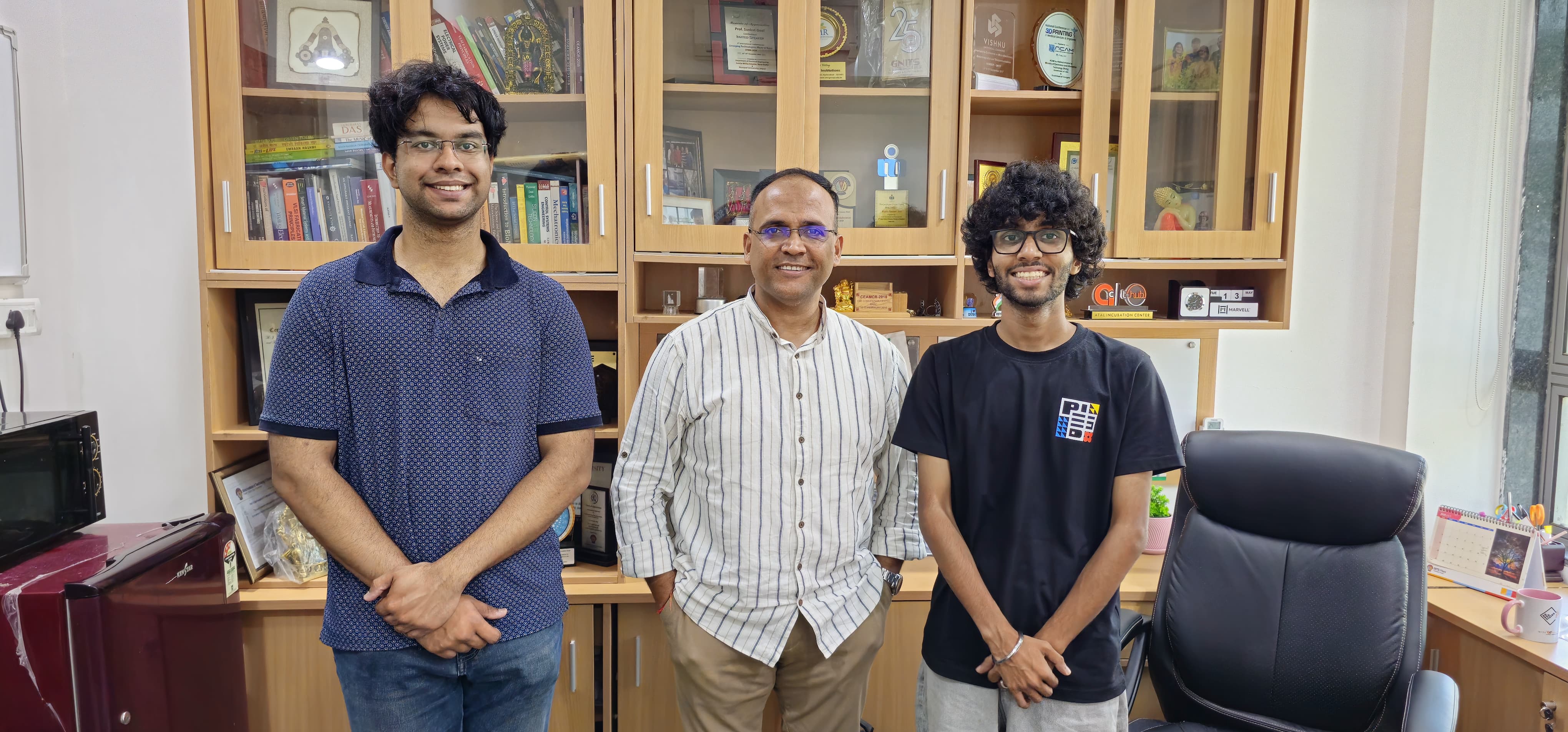
Jayant Khatri, a mechanical engineering student from Ajmer, and Sourya Choudhury, an electrical engineering student from Kolkata, co-founded their defence technology startup Apollyon Dynamics just a few months ago. In a short span, they have already supplied drones to Indian Army units stationed across Jammu, Chandimandir (Haryana), Panagarh (West Bengal), Arunachal Pradesh, Bihar, Uttar Pradesh, and Secunderabad. Their journey from college dorm to defence labs reflects a potent mix of passion, persistence, and patriotism.
During a sit-down exclusive interview with Connected to India’s Sudipto Maity, the two students along with their mentor, spoke at length about their new innovation.
A childhood love for robotics
Both Jayant and Sourya had been passionate about technology long before they entered BITS. Jayant’s love for robotics began as early as Class 5. “I was always building things. In Class 11, I won a national-level competition for smart glasses I had designed,” he recalls. His school days were filled with tinkering, prototyping, and dreaming of building real-world tech.
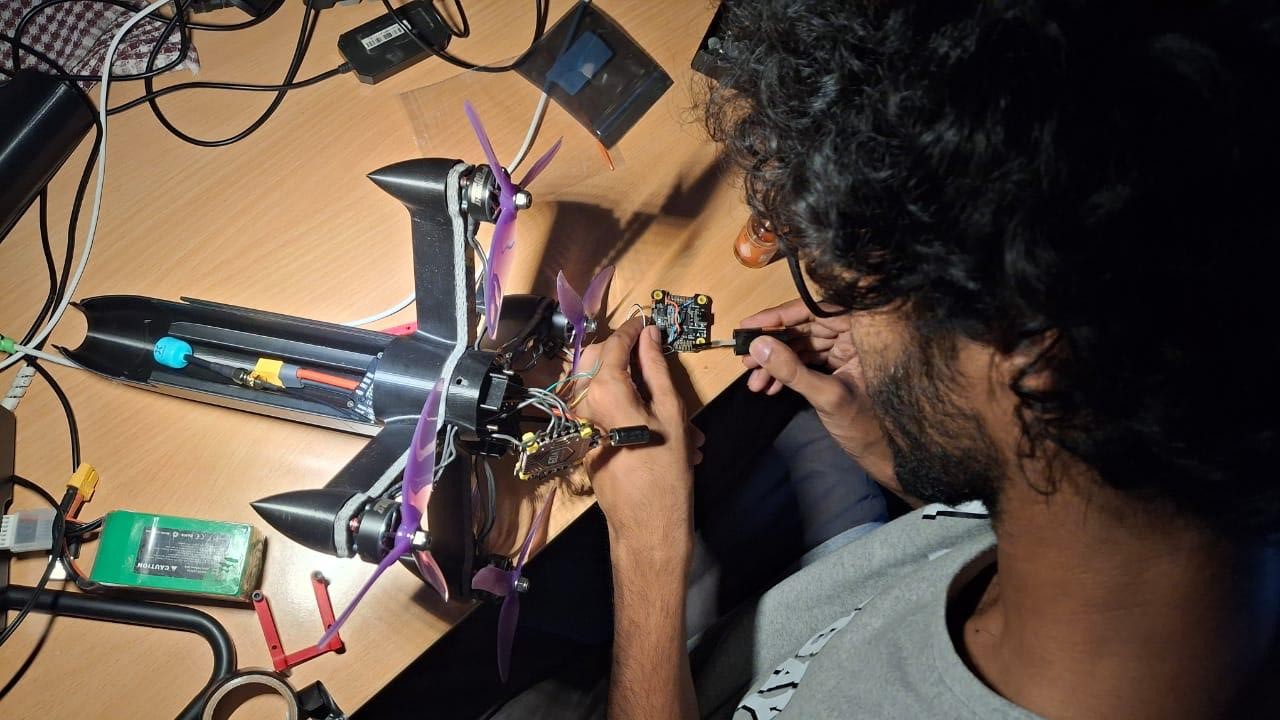
Sourya, on the other hand, had already made a name for himself as a drone pilot. Certified by the Indian Drone Racing League (IDRL), he was building racing drones that could clock speeds above 200 kmph. “I was obsessed with flight mechanics. I had built several racing and freestyle drones,” he says.
When they joined BITS Pilani Hyderabad, the shared passion was all it took. “We met in the auditorium through a mutual friend. Within a week, we were building our first plane together,” Jayant smiles.
Laying the foundation: Team Vidrohi
The duo quickly realised their interests went beyond hobbyist experimentation. Together, they started a defence-tech club on campus, aptly named Team Vidrohi. The name reflects a spirit of rebellion and innovation.
In this club, they didn’t just tinker. They built — live-firing gun replicas, hovercrafts, railguns, and even prosthetics. “It was a space where we pushed boundaries, experimenting with real defence applications,” says Jayant. One of their early grants, a modest Rs 2,000, came from BITS during Jayant’s first year. “It wasn’t much, but it meant a lot. It was the first external validation that we were on to something,” he adds.
The shift to military applications
In 2024, as drone warfare made global headlines — from Ukraine to Gaza — the two began to look at their drone-building skills from a different lens.
“We were watching how inexpensive drones were being used to take down tanks and disrupt military supply chains,” says Sourya. “It was a moment of realisation. If other countries are leveraging this tech, why can’t we build systems for our own forces?”
By March, they started building a kamikaze drone — a low-cost, high-speed drone designed to fly into targets and self-destruct, carrying out maximum impact at minimal cost. By May, they had a working prototype.

This was no random assembly of motors and propellers. These were custom-engineered UAVs, designed for high payload delivery, evasive manoeuvres, and real-time surveillance — all tested under anti-jamming conditions.
The first break: an Army order
The leap from campus to combat happened through sheer initiative. Jayant spent weeks cold-emailing and messaging Army officers across the country, primarily through LinkedIn.
One day, a Lieutenant Colonel in Chandigarh replied. He placed an advance order for a trainer drone and invited them for a live demonstration.
“We knew this was the moment we had been waiting for,” says Sourya. “You don’t get a second chance to make a first impression with the Army.”
So they packed their drones and flew to Chandigarh, carrying not just the ordered trainer drone, but also their entire prototype lineup — including a kamikaze drone, a payload dropper, and a high-speed reconnaissance drone.
“It’s one thing to talk about what your drone can do, and completely another to fly it at full speed, drop a payload, and demonstrate dive mechanics live,” says Sourya. “That’s what we did — and they were impressed.”
Orders, referrals, and momentum
The demonstration in Chandigarh opened the floodgates. The Army officers not only placed more orders but also referred the team to other units. Soon, Apollyon drones were being shipped and tested in different terrains and conditions — from the hills of Arunachal to the plains of Panagarh.
“We tested our drones in front of jammers, dropped test explosives, and showed them how our systems perform under real field scenarios,” says Jayant.
They continued keeping their mentor, Professor Sanket Goel, updated via a WhatsApp group. “We would post daily updates — sir, we flew here, we dropped the payload there — and he was constantly encouraging us,” says Jayant.
A drone unlike any other
At the heart of Apollyon Dynamics’ defence-tech offering is a high-speed kamikaze drone — one that sets itself apart both in performance and purpose. Designed to reach speeds of over 300 kilometres per hour, it moves nearly five times faster than most commercial drones, while maintaining striking precision in its operations.
Built with the intent to evade detection, the drone’s stealth profile makes it especially valuable for modern-day tactical missions.
Each drone is designed using widely available components but is engineered specifically for Indian conditions. From rough terrains to high altitudes, the UAVs are fine-tuned for endurance and stability. The assembly, right from structure to software, is handled in-house — a process that allows Jayant and Sourya to customise every detail and ensure the final product is both rugged and reliable.
Fuelled by the MMNE Lab
Much like the swift, precise strike of its indigenous combat drone, the MMNE Lab at BITS Pilani, Hyderabad is engineering a whole fleet of innovations.
Backing Jayant and Sourya’s journey from concept to a mission-ready product for the Indian Army, the lab provided early fabrication facilities and technical expertise, with Prof. Sanket Goel, the Principal Investigator, playing a key role in the process.
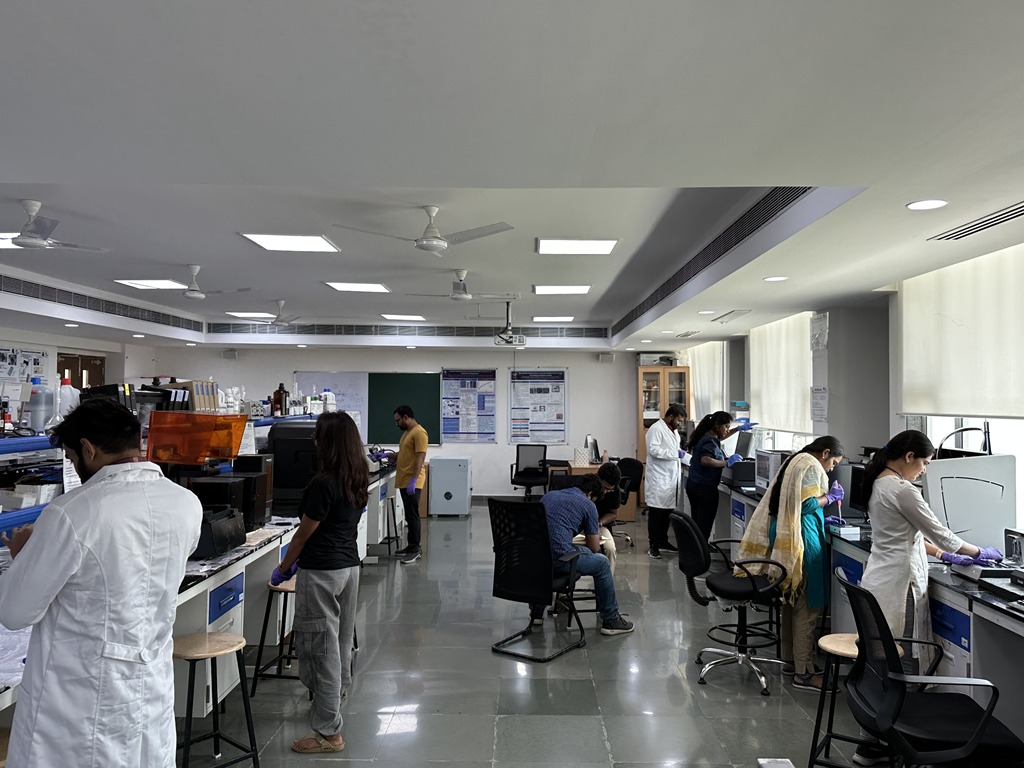
But the drone is only a glimpse of the scale here: MMNE has spun off three startups (Cleome, Pyrome, and Sensome), already executed several technology transfers and co-industry developments, filed over 60 patents, published more than 300 research papers, and runs over 20 funded projects in areas from microfluidics to wearables to IoT-enabled sensing.
With a diverse team of 40+ researchers, the lab is a powerhouse turning cutting-edge science into real-world impact. The drone is just one chapter; many more visible breakthroughs are already taxiing for takeoff.
Support from BITS and Prof. Goel
Professor Goel, who heads the Centre for Research Excellence in Semiconductor Technologies (CREST), has been a crucial behind-the-scenes pillar. While he downplays his role, calling it “close to nothing,” Jayant insists otherwise.
“In the early stages, when we had no access to resources, sir gave us his lab, allowed us to use all the equipment — from 3D printers to electronic tools. He even helped us win a Rs 2 lakh grant under BITS’ SOLVE programme,” Jayant explains.
Professor Goel’s role was not just technical, but motivational. “Sometimes all they needed was a nudge, or someone to open a door for them. That’s what I tried to do,” he says.
Demonstration before Kumar Mangalam Birla
A big moment for the startup came when they were invited to demonstrate their drones during BITS Pilani’s convocation in front of Chancellor Kumar Mangalam Birla, an Indian billionaire businessman who chairs the globally renowned Aditya Birla Group.
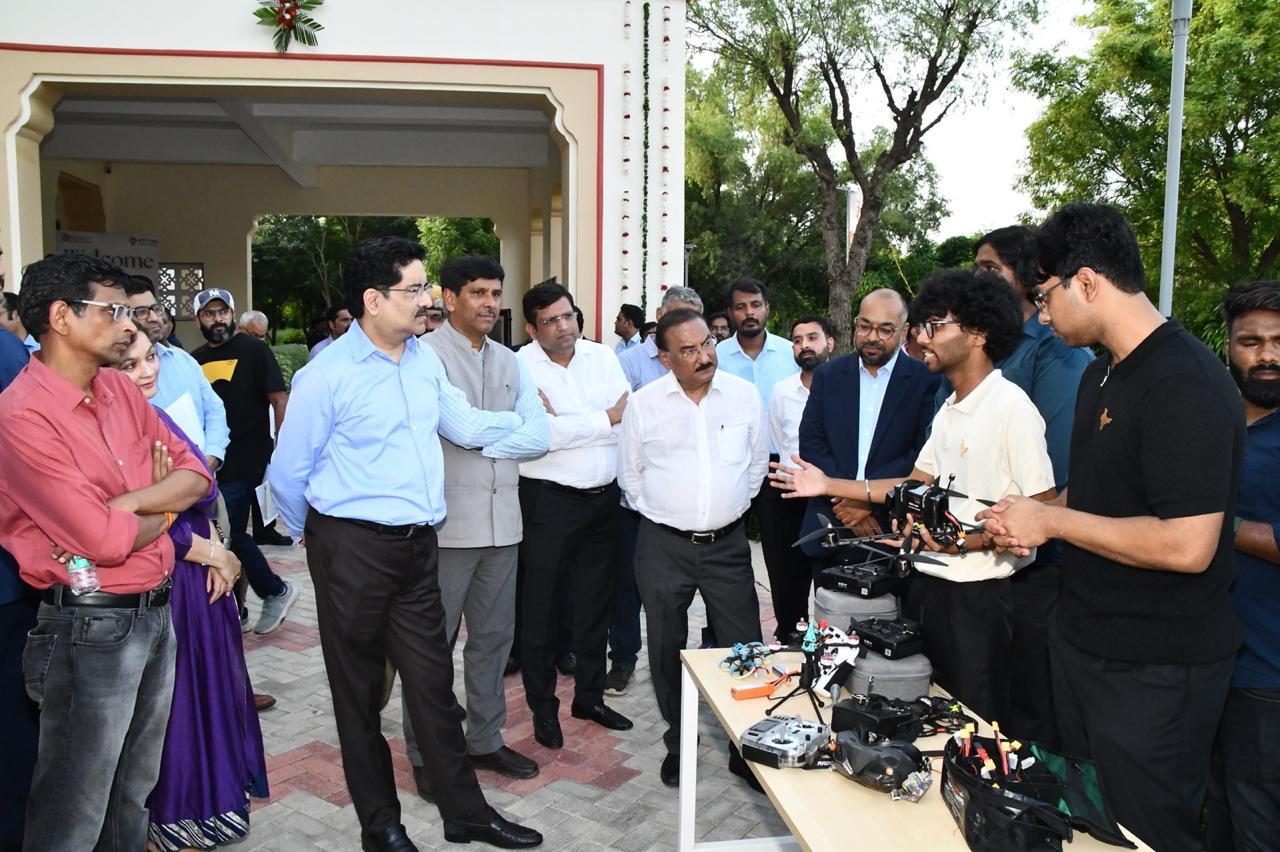
“It was a big deal. We flew our drones in front of him, and he took real interest. He asked questions about the defence industry, about how we plan to grow. That recognition meant a lot,” says Jayant.
Inside Apollyon Dynamics
Today, Apollyon Dynamics is a 15-member team, with a blend of founders, juniors, and peers. The startup is still based out of campus, but rapidly growing.
Jayant, as CEO, handles the business development, investor relations, and operations. Sourya, as CTO, leads all technical development, R&D, and drone design.
They’re currently developing a wider portfolio — including reconnaissance drones, payload carriers, surveillance UAVs, and battlefield integration tools. Their trainer drone, in fact, remains one of their bestsellers.
What sets Apollyon Dynamics apart from other drone startups is their approach. “We don’t just make drones,” explains Sourya. “We build unmanned systems that act as tailored solutions to military problems. Our drones are customisable, quickly modifiable, and can be integrated into existing infrastructure like artillery and tank units.”
Not looking for fame
Despite the media attention, Jayant and Sourya insist that they’re not looking to be campus celebrities. “We spend most of our day in the lab. We don’t have time to walk around campus and feel like stars,” Sourya laughs.
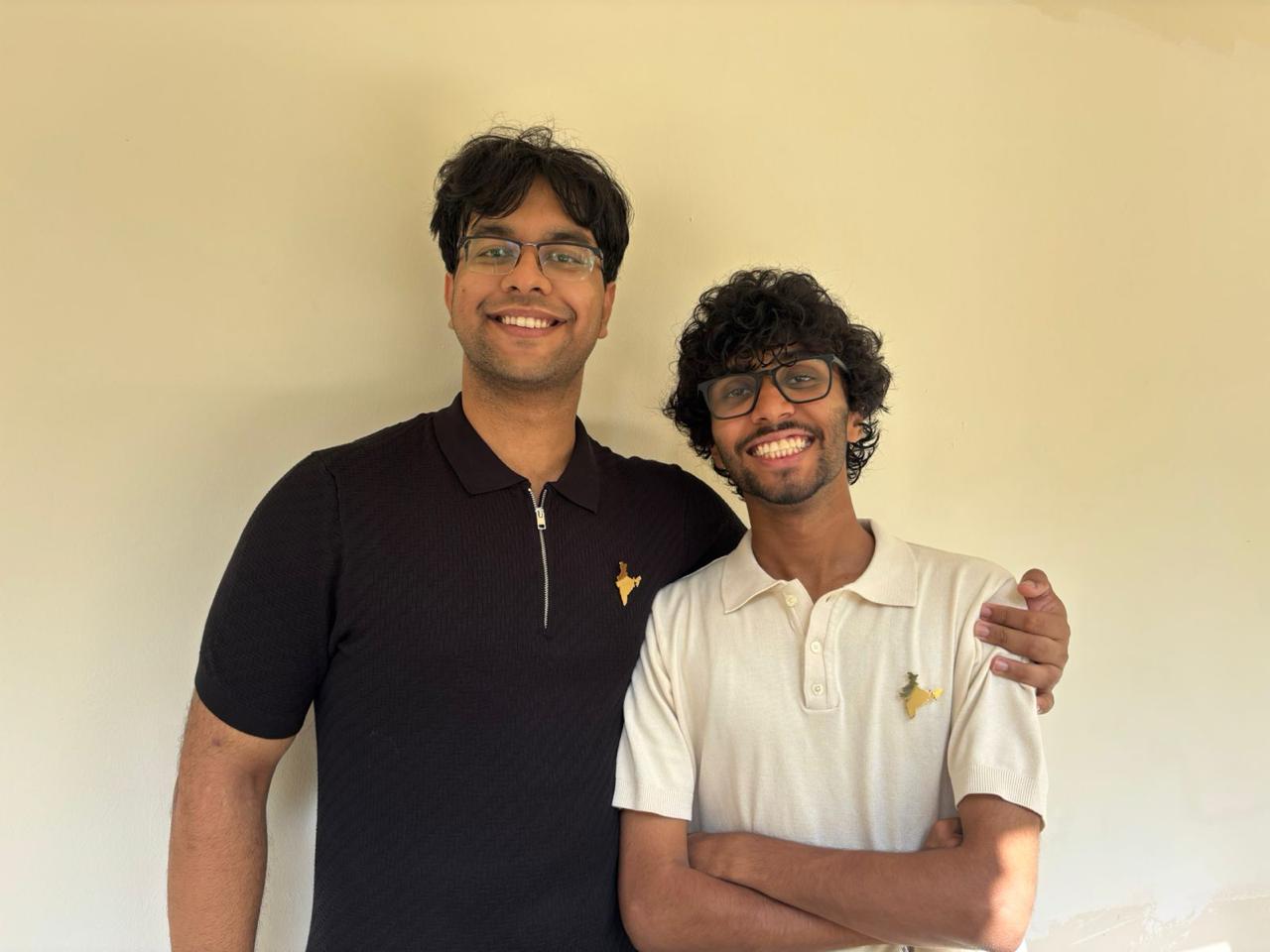
Instead, they are focused on improving India’s strategic defence capabilities. “The dream is to build systems that are not only used by India but also exported to friendly nations,” says Jayant.
Are they close to that goal? “Not yet,” admits Sourya. “There’s still a long way to go. We need to outperform global competitors. But we’re learning fast. And we believe we’re on the right path.”
Mentorship and advice
Asked for his advice, Professor Goel offers it to his students — and to other aspiring innovators. “Fame can be short-lived. The real challenge is staying relevant and contemporary. What you build today must also prepare you for what’s coming 5–10 years down the line.”
He adds, “Jayant and Sourya didn’t wait for permission. They took initiative, they asked for help, and that’s why support came. That’s a message all students should remember — don’t hesitate, just take the first step.”
What’s been the biggest reward?
For Jayant, it’s the network they’ve built. “We’ve met VCs, government officials, Army units — all because of this journey. The connections we’ve made are invaluable.”
For Sourya, it’s the shift in perspective. “What we thought was impossible is actually doable. Most of the obstacles were in our minds. Once you break through the first one, the rest start falling.”
From humble hostel rooms to high-level defence demonstrations, Apollyon Dynamics is proving that India’s next leap in defence innovation might just come from college dorms and campuses — not defence corridors.
And at the centre of it all are two students, a small team, and a big dream.


